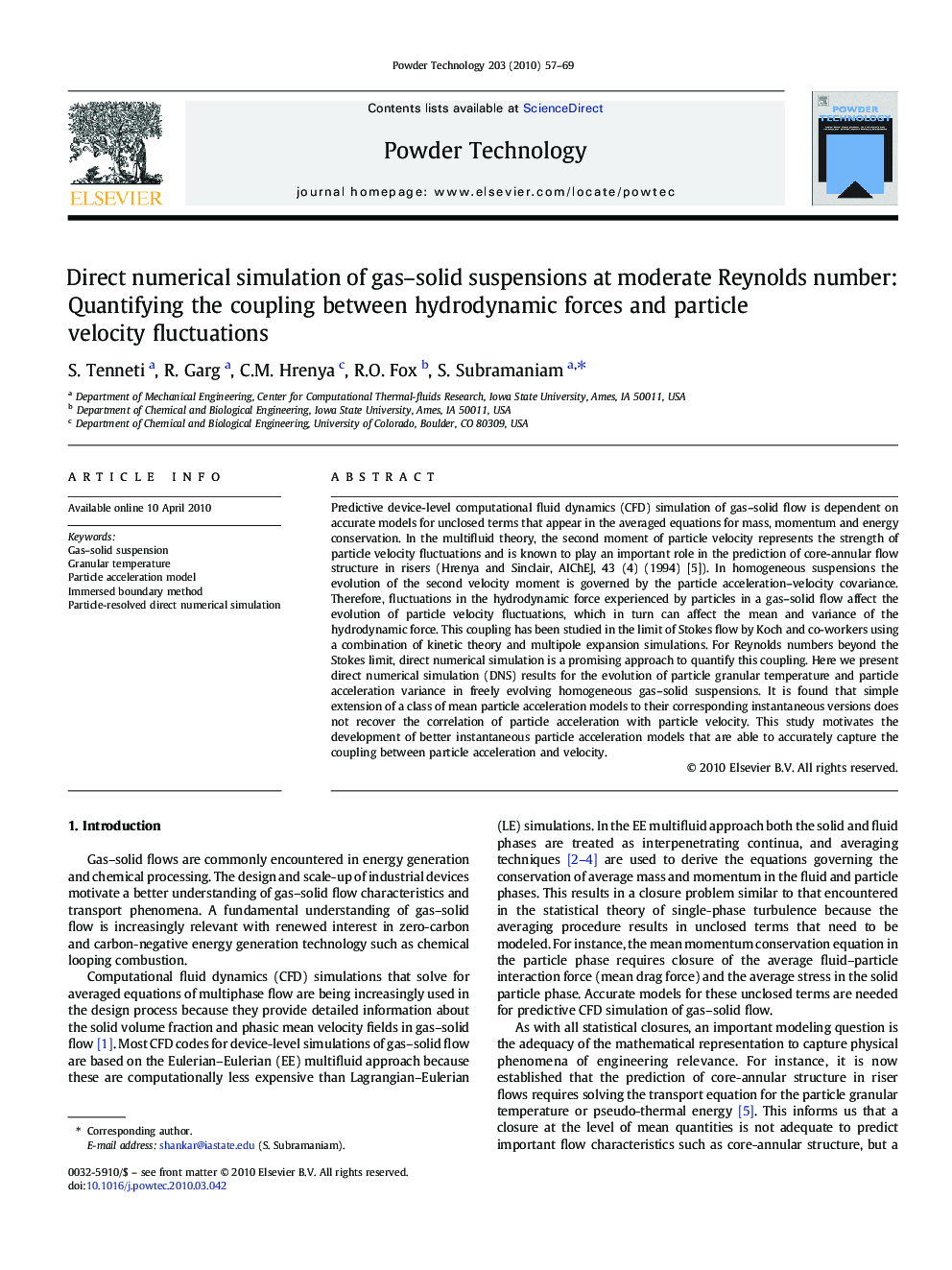| کد مقاله | کد نشریه | سال انتشار | مقاله انگلیسی | نسخه تمام متن |
|---|---|---|---|---|
| 237805 | 465726 | 2010 | 13 صفحه PDF | دانلود رایگان |

Predictive device-level computational fluid dynamics (CFD) simulation of gas–solid flow is dependent on accurate models for unclosed terms that appear in the averaged equations for mass, momentum and energy conservation. In the multifluid theory, the second moment of particle velocity represents the strength of particle velocity fluctuations and is known to play an important role in the prediction of core-annular flow structure in risers (Hrenya and Sinclair, AIChEJ, 43 (4) (1994) [5]). In homogeneous suspensions the evolution of the second velocity moment is governed by the particle acceleration–velocity covariance. Therefore, fluctuations in the hydrodynamic force experienced by particles in a gas–solid flow affect the evolution of particle velocity fluctuations, which in turn can affect the mean and variance of the hydrodynamic force. This coupling has been studied in the limit of Stokes flow by Koch and co-workers using a combination of kinetic theory and multipole expansion simulations. For Reynolds numbers beyond the Stokes limit, direct numerical simulation is a promising approach to quantify this coupling. Here we present direct numerical simulation (DNS) results for the evolution of particle granular temperature and particle acceleration variance in freely evolving homogeneous gas–solid suspensions. It is found that simple extension of a class of mean particle acceleration models to their corresponding instantaneous versions does not recover the correlation of particle acceleration with particle velocity. This study motivates the development of better instantaneous particle acceleration models that are able to accurately capture the coupling between particle acceleration and velocity.
We present direct numerical simulation (DNS) results for the evolution of particle granular temperature in freely evolving gas-solid suspensions. Simple extension of mean particle acceleration models to their instantaneous versions does not recover the correct acceleration-velocity covariance that is observed in DNS. This motivates the development of better acceleration models to accurately capture the coupling between particle acceleration and velocity.Figure optionsDownload as PowerPoint slide
Journal: Powder Technology - Volume 203, Issue 1, 25 October 2010, Pages 57–69